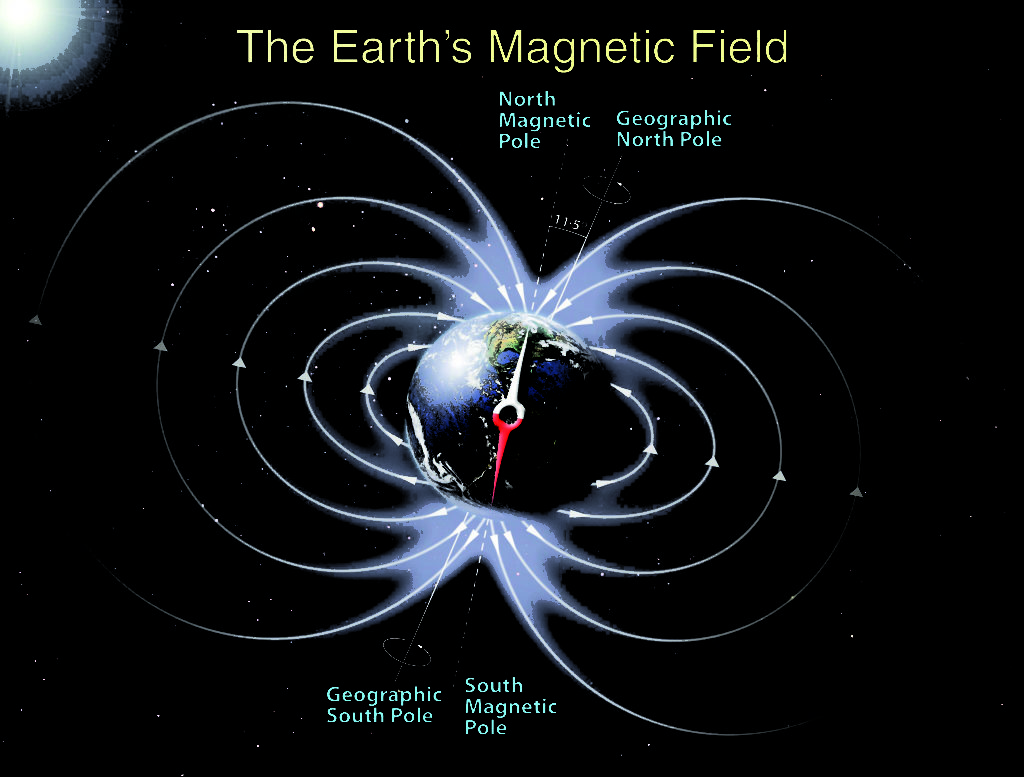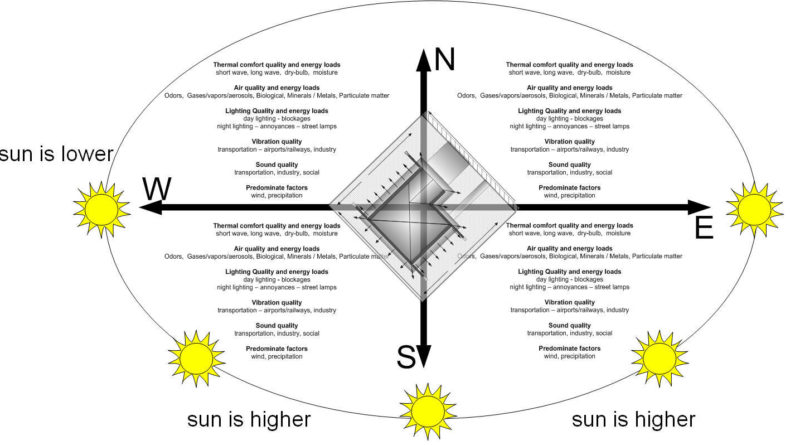SCIENTIFIC VASTU PRINCIPLE | SITE ORIENTATION | An Architect Explains
After Selecting the Site, it is advisable to apply Vastu Principles and tips to the design of the building. This will ensure a proportionate, aesthetic and beautiful building with the right measurements. One of the five Vastu principles called ‘Site orientation’ is used as a reference guide for designing and planning buildings. Site Orientation refers to the location or position of the Site with respect to the cardinal directions (or the points of the Compass).

You can identify the Site’s orientation by the direction that the front of the Site faces i.e. the side facing the road. So, when you stand in the Site and face the road, the direction you face is the Site’s orientation. Therefore, a Site with a road in the East, is called a East facing Site.
Since Vastu is a science, every guideline is based on logic and scientific reasoning. As an Architect, I have explained the Vastu guidelines for Site orientation rationally and scientifically under the following headings, so that you have a choice and can decide what you want to follow or don’t instead of looking at Vastu as a superstition:
Why is orientation so important in Vastu Shastra?
Why is the Sun the most important factor that influences Vastu principles?
How does Vastu Shastra take into account the Sun in designing?
Why is the Earth’s magnetic field also an important factor in Vastu Shastra?
How is the orientation of a site ascertained in Vastu Shastra?
WHY IS ORIENTATION SO IMPORTANT IN VAASTU SHASTRA?
For the ancient Indians, orientation played a very important role in in their daily lives because the environmental factors that affect man and his buildings, like the Sun, the Earth’s magnetic field and the direction of the monsoon winds, were always taken with reference to the Cardinal directions –
The Sun rises in the East and sets in the West, and there is constant light from the North for countries in the Northern hemisphere during Uttaraayana (Jan 14 – July 15) and vice versa during Dakshinaayana (July 16 – Jan 14) in the southern hemisphere. Similarly, the Earth is a huge magnet with a magnetic North pole close to the actual North pole and a magnetic South pole near the actual South pole.
Therefore in laying down guidelines for the design of buildings, Vastu Shastra takes into account these factors and the orientation so that man can benefit from the positive and useful effects of these factors and is protected from their harmful and negative effects.
WHY IS THE SUN SO IMPORTANT IN VAASTU SHASTRA?
Giver of Life: From time immemorial, the Sun has been considered the ‘Giver of Life’ because without the Sun, there can be no life on Earth. The Sun illuminates the world.
Synthesis of Vitamin D: The Sun’s UV rays help in the synthesis of Vitamin D, a very essential nutrient/hormone in our bodies and they also destroy germs and bacteria.
Uplifts our spirits: The Sun uplifts our spirits and improves our overall health; in fact in scandinavian countries, during the winter months when the hours of sunlight are considerably reduced, a majority of people suffer from a depressive illness called SAD (Seasonal Affective Disorder).
Colours: In addition the seven constituent colours of the Sunlight; VIBGYOR, are the reason we see this world in colour and they are very useful in treating several diseases. Read more in Colour Therapy. Read more about the Sun’s positive effects.

Therefore it is important that all of us humans must expose ourselves through the day to the Sun. However, overexposure is not good as the intense UV rays of the Sun can cause skin cancers and the Infra-red heat rays can cause sunburn.
It is best to expose to diffused and indirect sunlight within the house and to direct sunlight only in the early mornings, when the intensity of the UV rays is less since they have to pass through the dense envelope of Carbon dioxide that is formed during the night, when all living things- animals and plants exhale CO2.
HOW DOES VASTU SHASTRA TAKE INTO ACCOUNT THE SUN IN DESIGNING?
In Vaastu Shastra, there is a lot of emphasis on designing buildings in such a way that all rooms get maximum benefit of the Sunlight by default and irrespective of whether the occupants desire it or not. Thus the East direction (for the useful, early morning sunlight) and the North direction (from where there is constant, pleasant sunlight through most of the year in India) assume a lot of importance in Vastu Shastra as explained here.
The most frequently used rooms during the day – are oriented in the East and the North whereas the rooms that are used mostly at night are restricted to the South and the West, which are hotter directions.
More Doors and windows – are placed in the East to allow the suns UV rays to penetrate into the house.
Trees and tall shrubs – are planted in the South and West of the site to protect the inmates from the afternoon heat and to provide them with oxygen
Tall trees and plants are avoided in the North and East – so as to allow an unhindered flow of useful morning light into the house.
The open wells and other water sources are kept in the North-East – to enable the morning UV rays of the sunlight to destroy germs and bacteria before the water is used.
Kitchens – where germs thrive due to the presence of food and moisture, are oriented to the East so that the UV rays of the morning Sun kill the microbes.
WHY IS THE EARTH’S MAGNETIC FIELD AN IMPORTANT FACTOR IN VASTU SHASTRA?

Like the Sun, the Earths magnetic field, also has a significant influence on the well being of the inmates of the house. Just as the Earth is a huge magnet with it’s magnetic North pole near the arctic North pole and the magnetic South pole near the Antarctic South pole, the human body behaves like a magnet with the head as the North pole and the feet as the South pole.
The magnetism in our body is caused because of the presence of iron ions in our blood. So it is important that at all times we should ensure that our head does not lie towards the North since like poles always repel each other. And scientifically it has been proven that if one sleeps with the head in the North, the blood circulation is affected and it causes headaches, tensions and disturbed sleep. Read more about the Earth’s magnetic field here.
HOW IS THE ORIENTATION OF A SITE ASCERTAINED?
To ascertain the ‘Orientation’ of the Site, nowadays we use a compass. Furthermore, it is recommended that one stand with the compass in the centre of the plot, which is considered the navel of the Vastu purusha and determine where the North is. Then identify the direction of the road. Accordingly that is the orientation of the Site.

However, in earlier times a procedure called Shankustaapana was followed. In this method, a gnomon is erected in the centre of the plot. A circle is drawn with the bottom of the gnomon as it’s centre and a radius twice it’s length. Two points are marked where the shadow of the gnomon before and after noon meet the circumference of the circle. The line joining these two points is the East-West line. Two circles are drawn at the East-West points with their distance as the radius. The intersecting points are the North and South points.
READ MORE:
This post is about the ‘Vastu Shastra principle | Site Orientation’. Read about another important “Vaastu Shastra principle | Vastu Purusha Mandala – Site Planning”, which explains the positioning of rooms in a House according to a diagram known as the Vastu Purusha Mandala:
For the latest news on architecture and buildings designed/completed recently, go to:
If you found this post useful, all it takes is a simple click on the “pin it” “like,” “share,” “tweet,” or Google+ buttons below the post.
Related Topics:
- Vastu Shastra | An Architect Explains
- Vastu Shastra | Principles For A House
- Vastu Shastra | Factors That Impact A House
- Vastu Guidelines | Designing A House
- Vastu Guidelines | Interiors Of A House
- Vastu Guidelines | Exteriors Of A House
- Vastu Guidelines | Selecting The Right Site
- Vastu Guidelines | Construction Of A House
- Vastu Guidelines | Rituals For A House
- Vastu Guidelines | Non-Residential Buildings
- Remedies For Vastu Defects





thanks for the information.
A very good post and a must to know knowledge for all building related people’s..where there is a lot of superstitious ideas making a havoc to the structures with crap ideas..
I loved your article very much it’s having great information about vastu consultation. Really I need these type of article a long period. Thanks for sharing with us…..
Hi Vipin Kumar,
Thank You for taking the time to post an appreciative comment. I’m glad it has been useful to you.
Admin
hello admin,
Thank you for your insight and the logical explanations of the orientation principle of vastu.
I have a question regarding orientation and your other post regarding the correct placement principle using the purusha mandala.
given that the vastu principles are originally based on India ( northern hemisphere), how would one go about translating the correct placements and orientations in the southern hemisphere? is there any principle of translation or any mandala for southern hemisphere?
Currently stuck on this question as its part of my thesis project, any info/clarification will be greatly appreciated.
regards
Hi Paresh,
As you have pointed out, the Vastu rules are applicable only for buildings specifically in India as they are based on the prevailing wind directions and sun movement. I am not aware of any vastu mandala applicable for buildings in the Southern hemisphere. Sorry I cannot help.
Admin
I constructed a commercial building in Kerala. A delay happened to complete and now understand from consultants that there are some defects like orientation and measurement. Commercial building have to follow corporation rules even though The drawing was already checked by a famous Vasthu consultant and corrected before construction. Now the construction is over but not rented. I consulted another and said measurement is wrong.
Can you recommend how i can rectify the problems.
RAJAN
Hi Rajan,
Yours is an example of why vastu consultation is a waste of time. The delay in getting it rented out may be due to other problems like a sluggish market or maybe because the plan is not efficient. Also the delay in construction may have put off potential tenants. If possible try to find out what the people who come to see it find discouraging. But be patient.
Admin
I have main door east of north east and garage in north of north east. Please advise if all good to buy new house.
Hi Rama,
Please do not look at the small things and go ahead.
Admin
very good information on vastushastra so as to remove undue worries from minds caused by lack of knowledge of real facts about vastushastra
Hi Amol wadhe,
Thank you for appreciating the scientific approach that I have taken to explain Vastu.
Admin
this is an excellent one…. really give logical and scientific reasoning for all….
Hi Ar Neetu,
Coming from a fellow architect, your appreciation means a lot to me. Thank you.
Admin
nice post. thanks.